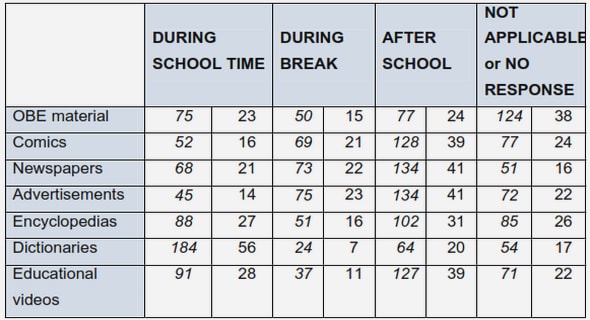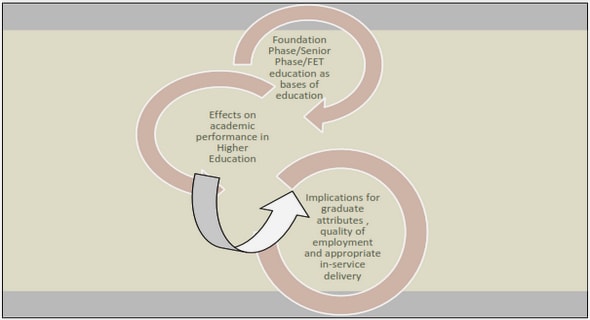Get Complete Project Material File(s) Now! »
Methodology
Introduction
Before presenting the actual findings of our study, we begin by laying the groundwork for understanding the choices we made for conducting it. Here, we aim to provide sufficient motivations, based on research methodology principles, why the chosen approach is appropriate for our topic and research questions. This is instrumental for the credibility of the results presented later (Crotty, 1998). We start by introducing the “research onion” model by Saunders, Lewis and Thornhill (2012) that illustrates the multiple layers of methodology decisions to be made in research design. We then go through all the layers and motivate the choices we have made when planning this thesis. Approaching the innermost core, particular attention will be given to data collection and analysis aspects. We conclude by discussing research quality and research ethics aspects of the study.
Main methodology choices
The choices of different approaches, strategies and methods can be explained using the “research onion” model developed by Saunders et al. (2012). It illustrates the stages to be covered in the research design process in a systematic sequence where each next stage builds upon decisions made in previous stages. The onion model is depicted in Figure 12. In the following, we step through the layers, describe their functions, and explain the choices made in our study.
Research Philosophy
Research philosophy at the most general level consists of ontology and epistemology elements. Ontology reflects the set of beliefs about the nature of the reality that is being investigated (Easterby-Smith, Thorpe & Jackson, 2015). The field of epistemology deals with assumptions about ways to inquire into that reality to understand it. The two main epistemological frameworks are positivism and constructionism (EasterbySmith et al., 2015). Positivism argues that reality exists independently of the object or phenomenon being studied and the observation does not depend on the subject or the observer. Constructionism, on the other hand, argues that the inherent meaning of social phenomena depends on, and even is created by, each observer or participant group. According to this philosophy, what is observed is interpreted differently, depending on the participant. The suitable approach is to examine differences in the experiences and their expressions among the participants. The epistemological beliefs can further be subdivided into strong and moderate flavors of the two extremes.
Research Approach
The two extreme representatives in this layer are the deductive and inductive research approaches. The deductive approach formulates hypotheses based on a pre-existing theory and then formulates the research approach to test it. It is suited e.g. to situations of examining whether the observations fit previous research. The deductive approach moves from the general to the particular: the theory is first established and the empirical knowledge is then tested against it (Kothari, 2004). The inductive approach, on the other hand, moves from the specific to the general – the researcher looks for patterns in the data from observations, often without a fixed initial framework to limit the data collection (Flick, 2011). Our literature search has not revealed existing in-depth discussion of VAS offering principles or corresponding frameworks. Thus, the research process is partially inductive, where empirical data together with secondary data from non-academic literature is used to advance the understanding of VAS offering decisions by the 3PL providers. However, we also use the existing theory to guide the structure of the relationships and dependencies we seek. The theory can be used to evaluate to which extent the empirical findings match the prior academic knowledge; the study thus also contains a deductive element. We therefore assess the research approach on a whole as abductive, where data is collected to explore a phenomenon and its possible patterns, which are later tested to generate new knowledge or modify existing theory (Saunders et al., 2012).
Strategy, method choices, and time horizon
We now arrive at the layers more immediately affecting the practical design of the study. Research strategy can be viewed as the link between the philosophy and data collection methods. It describes how the researcher intends to carry out the work (Saunders et al., 2012). The strategy can consist of one or several approaches, such as experimental research, action research, case study research, interviews, surveys, or a systematic literature review. Each of these approaches has their advantages and disadvantages that can affect the validity of the results (Bryman, 2006). To improve the quality of the results, multiple methods of data collection and gathering data from more than one source within a studied organization may be used. This is referred to as triangulation and is commonly used to increase the trustworthiness of the results (Saunders et al., 2012). In this study, we have chosen to use survey and interview approaches for primary data collection, augmented by using secondary data in the form of statistics from existing literature. This enables triangulation to avoid biases inherent in relying on a single type of data collection (Bryman, 2006). The onion model (Saunders et al., 2012) next reveals the layer of method choices. The choices presented are essentially between the quantitative and qualitative approaches. The study may be designed using a mono-method approach relying on a single method, or mixed and multi-methods that use several methods on a single or separate data sets, respectively (Flick, 2011). One of the prerequisites for a reliable quantitative study is a fairly large sample size – at least 50-100 samples to obtain confident regression model or correlation results (Saunders et al., 2012). Since we considered it infeasible in this study to gather information from such a large number of companies, we have chosen the qualitative approach. This way, data from a smaller sample size and the derived results are still valid in the more constructionist perspective (Easterby-Smith et al., 2015). The qualitative approach is also generally deemed appropriate for answering research questions of the type “what” and “how”, as is the case in this thesis (Saunders et al., 2012). Since different information gathering methods – surveys and interviews – are used, the study can be classified as multi-qualitative. Approaching the core of the onion, the time horizon of the study presents a choice between cross-sectional and longitudinal approaches. A cross-sectional study collects data at a given point in time and can be thought of as a snapshot image of the observations (Flick, 2011). This is the time scale selected for the thesis – we are interested in VAS offering principles as currently exhibited by the companies we survey and interview. A longitudinal time horizon for data collection, on the other hand, would imply repeated observations over a longer time period. This is mostly relevant when studying changes over time (Flick, 2011), something that is outside the scope of this study.
Data collection
The innermost core of the research onion deals with data collection and analysis. These stages make up most of the practical work in a study. Suitable data collection procedures are critical for providing material for subsequent analysis, building understanding and frameworks, and drawing conclusions. They are also important for ensuring validity of the study. We will therefore thoroughly discuss our data collection approach in this section. We utilize both primary and secondary data in this thesis. Secondary data originates from logistics industry reports. Our sources of primary empirical information are 3PL providers and customers (manufacturers and/or retailers) in Nordic countries. Two main types of primary data collection approaches are used.
Surveys
We use survey questionnaires for primary data collection from a broad sample of companies. A questionnaire commonly refers to a data collection technique in which multiple respondents answer the same set of questions (deVaus, 2002). Survey data collected by this technique has a narrower range than e.g. interview-based data since the number of structured questions that can be asked in the questionnaire is limited. However, it is an efficient tool for finding patterns and associations in the observed phenomena (deVaus, 2002). We have contacted a large number of companies, both 3PL customers and providers, to inquire about their experiences with 3PL VASs. From the former, we obtained information from the customer perspective (Sec. 2.2), in particular which services they seek and their outsourcing and service selection behavior. The latter offered information from the provider perspective (Sec. 2.5), with focus on how the service offering and customization options are determined and which factors play a role in these decisions. Some of the companies are located in the Jönköping area, but most are from other parts of Sweden and other Nordic countries. We formed our questionnaires according to the guidelines by deVaus (2002). The questionnaire should be relatively short and simple. The questions should follow a logical order, starting from easy and moving to more difficult ones. Closed questions are preferred, open-ended and vague questions should be avoided. Leading questions are also inappropriate. Our questionnaires are presented in the Appendix 2 and 3. The questions were mostly multiple-choice, used partially to categorize the responding company according to several scenario dimensions, partially to assess the types of VAS they are involved in. To develop theoretical understanding and formulate a framework that covers a broad range of logistics scenarios, many different types of 3PL provider and customer companies should be contacted. To obtain generalizable results, various representatives of each of the categories should be included (Saunders et al., 2012). The time constraints of the study, however, limit the number of companies we have been able to include. Therefore, elements of the theoretical frame of reference are used to complement the primary survey data. An important element of survey design is the sample selection. Kothari (2004, p.152), defines sampling as a process of “obtaining information about an entire population by examining only a part of it.” We used non-probabilistic sampling where the chance of being selected from the total population is unknown. The sample size was limited and we had no opportunity to ensure that all provider and customer classes are proportionally represented. While such sampling would not be suited for answering research questions that require statistical conclusions about the population, it is suitable for qualitative studies aimed at identifying possible patterns in observed phenomena (Saunders et al., 2012). The survey results are therefore meant for illustration and qualitative validation of the empirical material from interviews. No statistical conclusions should be drawn, but the questionnaires provide existence examples for different service types in different scenarios and order-of-magnitude indications of factors affecting VAS offering decisions.
Semi-structured interviews
Interviews were used for further primary data collection from some companies contacted for the provider questionnaire survey. To better understand motivations for service offering decisions, we have performed in-depth interviews with a limited number of 3PL provider companies. The interviews were conducted last, after an initial orientation based on theoretical literature and the provider survey. Overview information about the interviews we conducted is presented. A semi-structured interview starts with the researcher having formulated a list of themes and open-ended questions to be covered. However, the interviewer lets the interview person develop any relevant discourse within these themes and does not strictly control the subject matter that is covered (Saunders et al., 2012). This way, semi-structured interviews can provide answers not only to questions “what” and “how”, but also to “why”. Our interview questions were prepared using on the previously acquired information from literature and the provider surveys. The interviews allowed obtaining better insights into which factors in practice steer the VAS offering decisions. An example interview guide is included in the Appendix 1. All interviews were recorded and transcribed shortly after the interview occasion. Further processing and information extraction was based on the transcripts. Some of the information shared by the companies included details that lie quite close to their operations and strategical reasoning. A few of the interviewed companies requested anonymity while others did not, but we have chosen to make all of them anonymous in order to protect any potentially sensitive information and avoid any business impact.
Data Analysis
After data collection, the acquired information must be converted into a manageable form for identifying patterns and drawing conclusions from the study. Reduction and structuring of the collected data is critical for being able to utilize it efficiently for analysis and conclusions (Saunders et al., 2012). Qualitative data analysis can utilize three general approaches: summarizing, categorization and structuring (Saunders et al., 2012). During summarizing, the relevant information is extracted from the collected data. We did this by formulating key pieces of information from interview transcripts in brief statements. Structuring is used to systematize the data by creating specific structures and attaching corresponding data to them. We used this approach mainly for survey results, extracting relations that are usable for developing the framework. The research design elements chosen for this thesis study, from the overall philosophy to data collection and analysis techniques, are summarized, using the previously discussed research onion model. This helps visualize the relationships between the design choices.
1 Introduction
1.1 Background
1.2 Problem Description
1.3 Purpose and Research Questions
1.4 Delimitation
1.5 Disposition of the thesis
2 Theoretical frame of reference
2.1 Introduction
2.2 The value chain and the value system
2.3 Generic business strategies
2.4 Logistics customer perspective
2.5 Logistics provider perspective
2.6 3PL relationships
2.7 Logistics scenarios
2.8 Summary of the frame of reference
3 Methodology
3.1 Introduction
3.2 Main methodology choices
3.3 Data collection
3.4 Data Analysis
3.5 Research Quality
3.6 Theory and framework development
4 Empirical findings
4.1 Surveys
4.2 Interviews
5 Analysis
5.1 Customer categories
5.2 Provider-customer relationships
5.3 3PL provider roles and their evolution
5.4 Expansion of VAS offering
5.5 VAS types and the importance of VAS
5.6 Relation of VAS to base services
5.7 Mapping logistics scenarios to VAS offering
5.8 Decision process
5.9 Service innovation and development
5.10 VAS offering in the light of Porter’s theories
5.11 Managerial and strategic aspects
6 Conclusions and discussion
6.1 Conclusions
6.2 Contributions
6.3 Limitations
6.4 Future research
GET THE COMPLETE PROJECT


